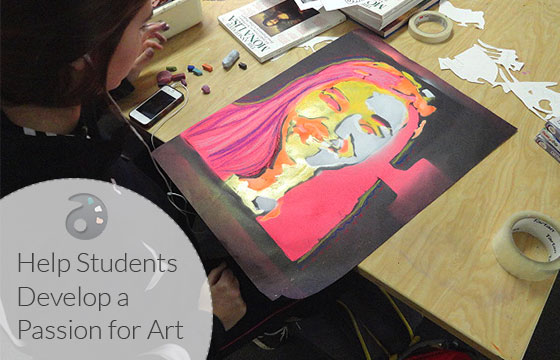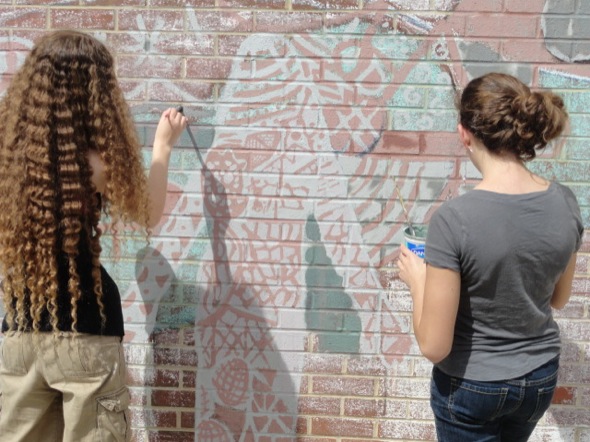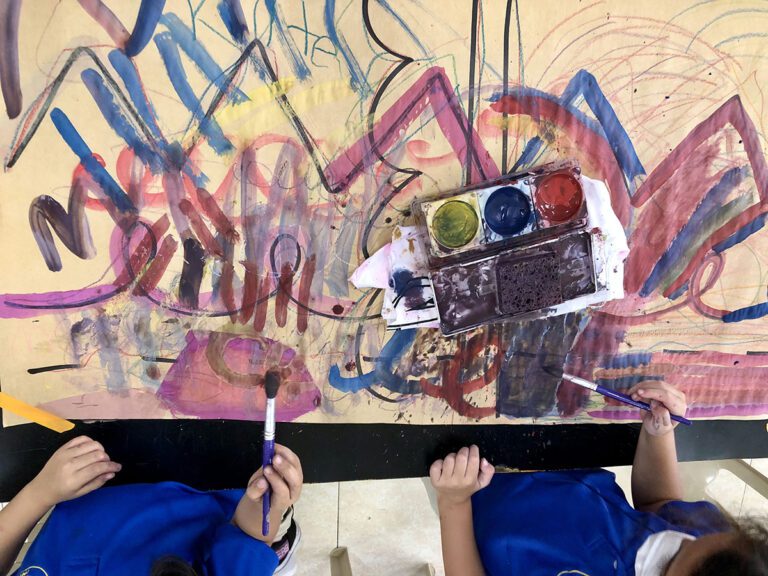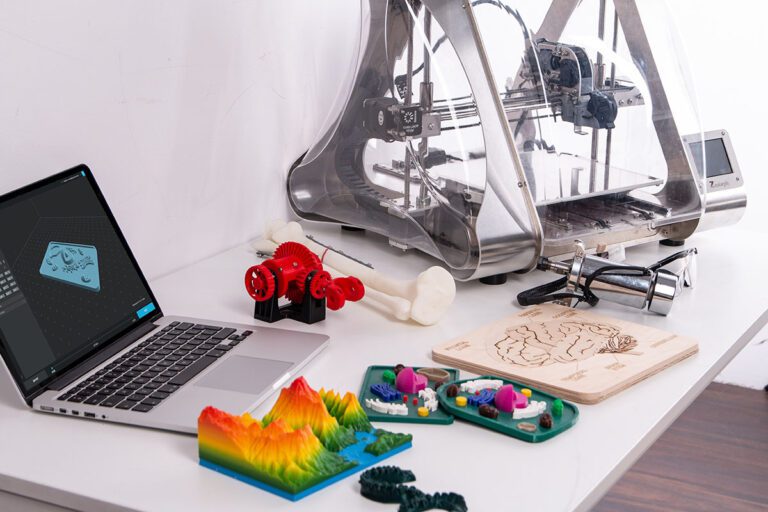There has been a great deal of discussion in educational circles about helping children find their passion. As art teachers, we hope all our students will be passionate about making art. But what makes something a passion?
There is an assumption that if we are good at doing something then we have a passion for it. But this is not necessarily so. Everyone in my family is passionate about playing golf. Everyone, except for me. I’m not a bad golfer but I just don’t enjoy the sport. It’s not my passion.
Likewise, just because we are passionate about something doesn’t mean we are necessarily good at it. I really enjoy playing piano. However, you might not be as passionate about listening as I am about playing.
It is fairly common to see both these scenarios play out in an art class. There are some students that are highly talented at making art but when asked if they will sign up for future art classes they are quick to say, “No”. They will take Guitar or French 3 or some other class. They are pursuing their passion, not simply following what they are good at.
Similarly, there are art students who can barely push a pencil who rush into the art room shouting out the news that they have signed up for more art classes. Like my piano playing, at least we can’t question their passion.

So, if talent alone doesn’t produce passion, what will?
I believe there are four factors that, if incorporated into our art lessons, will help our students develop a passion for making art.
1. Art Projects Should Bring Enjoyment
Most people agree that art can be fun; but what makes something fun? Fun doesn’t necessarily come from silly, projects that are easy to do. Challenges can be fun. When an art project incorporates a challenge, the outcome of overcoming that challenge is enjoyable. In the same way an art project that is not challenging, where nothing is learned or gained, is dull. Busy work is boring because it’s intent is not to challenge but to keep busy. Making sure a project is challenging is just one way to make a project enjoyable. Making sure your project has a certain level of fun will keep your students wanting more.
2. Art Projects Need to Allow Control
The desire to be in control, especially of ourselves is a basic human need. Going to school takes away much of a student’s ability to control his or her world. Schools tell the student where to go, when to go there, and even which seat to take. We need to design assignments that place the student in control of their art. Projects that are designed to build confidence put the student back in control. Keep in mind that a project that is challenging is fun but one with too daunting a task will cause the student to feel inadequate and not in control.

3. Art Projects Need to Offer Choice
Many students believe that art is what they make of it and therefore they should be allowed to make whatever they want. True creativity comes not from being allowed to do whatever we want but rather from making choices based on limited selections. We should write lesson plans that provide challenges to our students by limiting selections. However, we must be careful not to remove all the choice or the projects will become boring. The fine line is to reduce options while still allowing enough choices for creative solutions.
4. Art Projects Provide Approval
All art teachers have experienced the student that raises her hand and asks, “Do you like my art?” Whether motivated intrinsically or extrinsically, everyone is looking for some type of approval. A good art project allows time for critiquing. This can be as formal as a class critique session or as informal as an encouraging word as you walk around the room. What is important is that the critique be both honest and helpful. Empty praise sounds good but fails to deliver any impacting approval. Likewise, a critique that provides only negative criticism will not produce passion.

Consider how each of the above applies to your plans, and share with us in the comments section:
Which projects do your students find motivating? Which projects not so much? Why do you think?
By making sure each of the four factors above are incorporated into your lessons, you will ensure your students develop a passion for making art.
What are some other ideas you’ve found to help students get passionate about art?
Magazine articles and podcasts are opinions of professional education contributors and do not necessarily represent the position of the Art of Education University (AOEU) or its academic offerings. Contributors use terms in the way they are most often talked about in the scope of their educational experiences.




